Architecture in 2024 Oscar best picture nominees careens from fantasy to willful ignorance
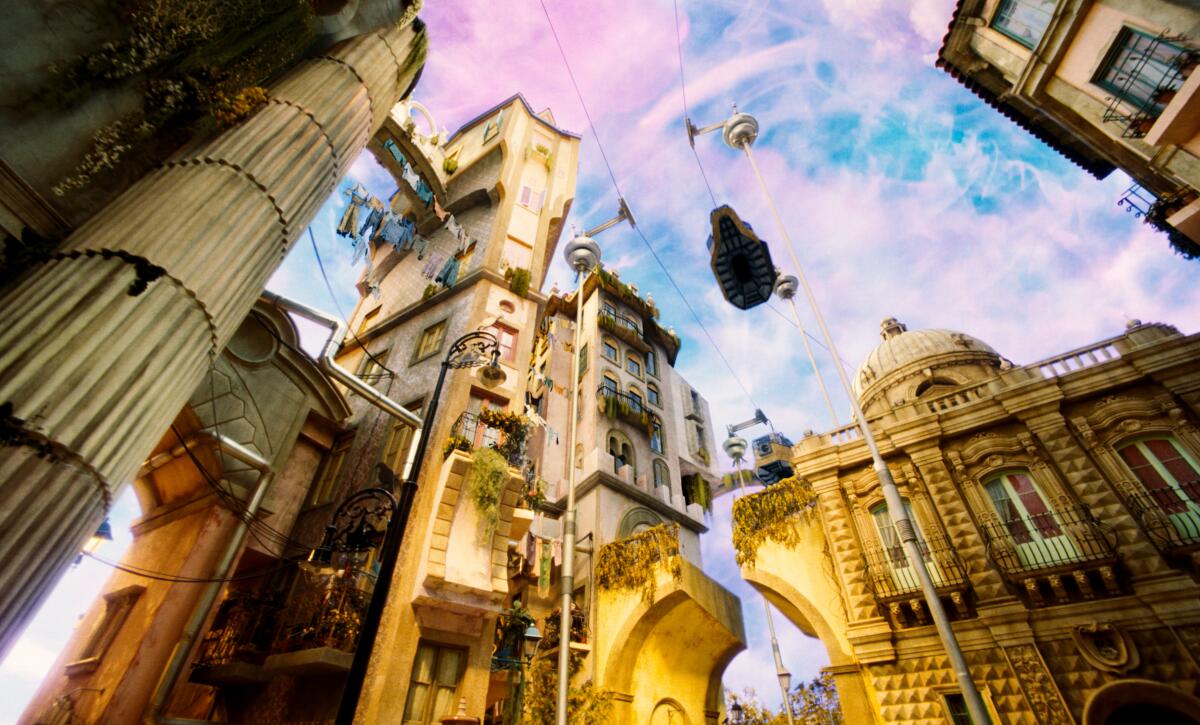
- Share via
It’s that time again! The blocks around the Dolby Theatre in Hollywood have been transformed into a security zone worthy of Baghdad in wartime in preparation for Oscars 2024. I’m Carolina A. Miranda, art and design columnist at the Los Angeles Times, and I’ll be watching the spectacle from under the fleece Virgen cobija I picked up at Smart & Final. I’ve also got some essential arts news:
When a house is not a house
Some of the most intriguing characters I saw on the big screen this Oscar season didn’t utter a single word. I’m talking about the architecture — namely houses — which not only help set the scene but also channel over-the-top fantasy, willful ignorance and roiling marital conflict. Among the nominees for best picture, you’ll find Barbie Dreamhouses, a woodsy chalet, hallucinatory visions of various European cities and a 1930s villa that sits at the literal ledge of death.
Let’s start with that chalet, which is a centerpiece of Justine Triet‘s brilliantly absorbing “Anatomy of a Fall.” Set in the French Alps outside Grenoble, the chalet might at first seem an object of luxury. (Those staggering Alpine views!) But close inspection reveals a home that is frayed at the edges, like the couple that inhabits it. A rough-hewn attic provides a key setup for the film’s plot: Samuel, a struggling novelist, is attempting to insulate the space when he falls to his death from the window. Did he slip? Or jump? Was he pushed by his frustrated wife, Sandra (the fabulous Sandra Hüller), who is also a novelist?
That is a secret the chalet seems intent on holding close.
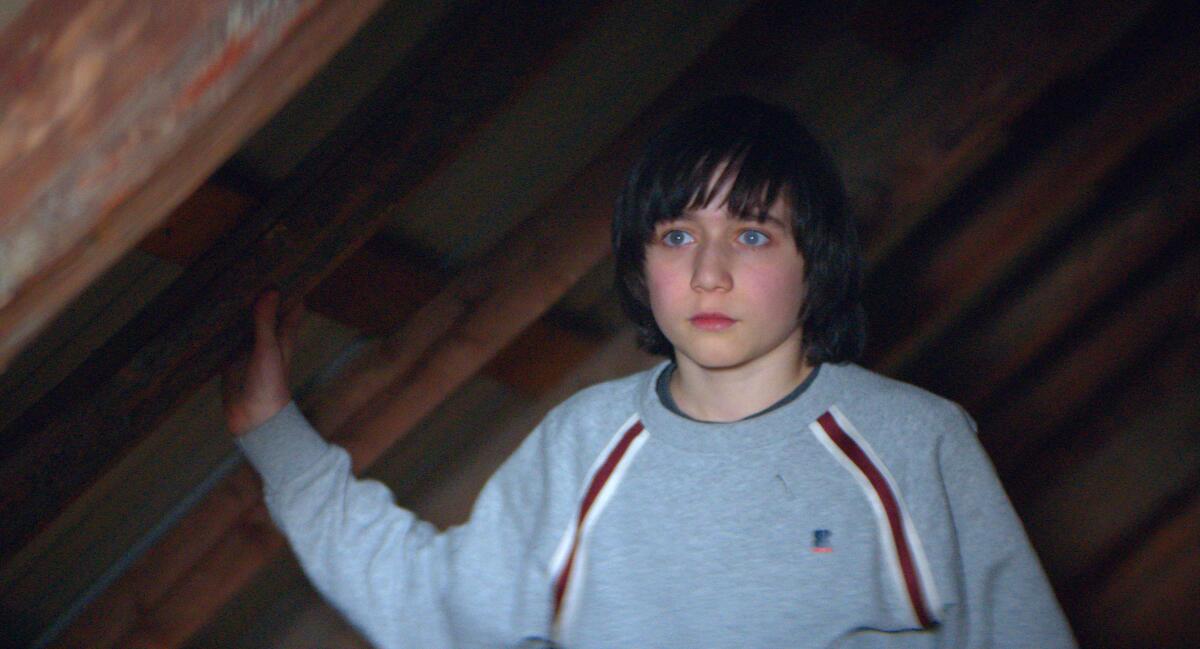
Far more chilling is the comfortable family villa that appears in Jonathan Glazer‘s “The Zone of Interest.” To be certain, the home is lovely: a boxy, two-story villa with Modernist flourishes, like the geometric handrail that bends around the stairs. Naturally, there is a garden, bursting with vegetables and flowers — as well as a welcoming swimming pool. But this idyllic little complex shares a wall of concrete with the death camp next door.
The villa belongs to Nazi commander Rudolf Höss (played by Christian Friedel), who oversees the extermination machine that is Auschwitz as his wife and children go about their banal daily routines. They swim, they eat, they get ready for school as gunshots echo in the distance and crematoria belch coal-colored soot. Glazer keeps a tight focus on the home, making it a disquieting frame through which to see (or, more accurately, hear) the genocide in the distance. (Production designer Christopher Oddy studied the real Rudolf Höss’ home before re-creating it at another site near Auschwitz; Curbed has a great interview with him about the process.)
To see mass murder is terrifying; to hear it echoed within the walls of a well-appointed home illustrates all the ways in which ordinary people can be complicit in the most horrifying acts.
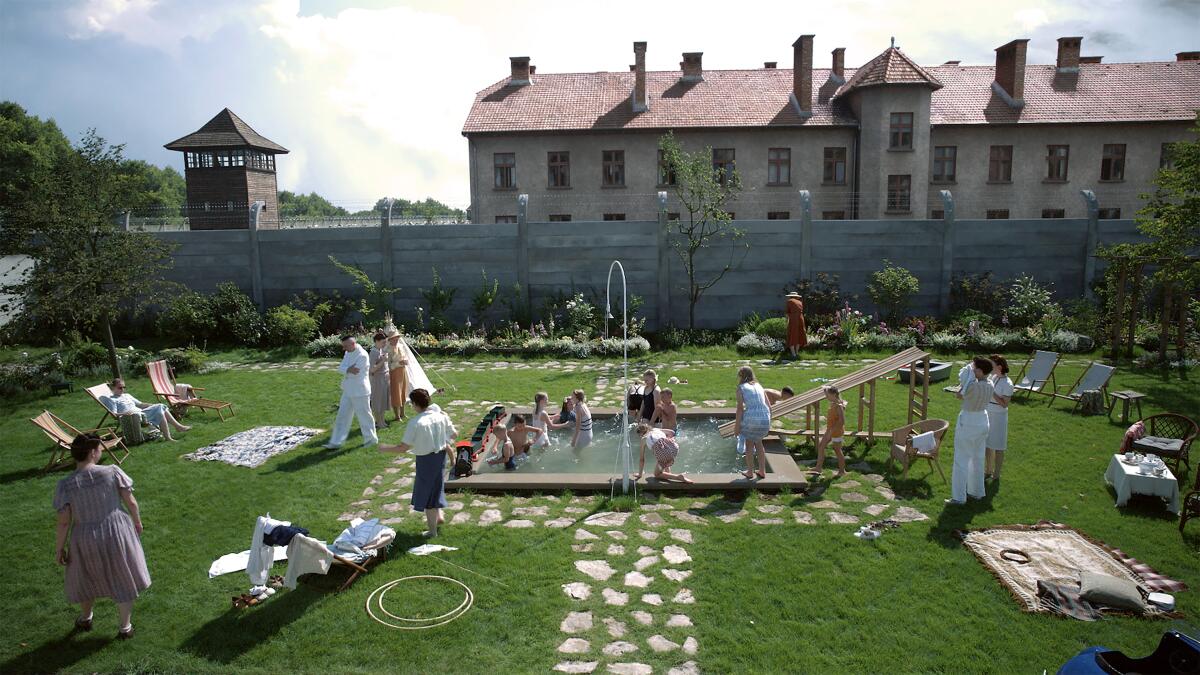
This season, however, isn’t just about death and the tenuous nature of truth. Architecture was also used in film to spin cotton candy visions. Greta Gerwig’s “Barbie” — which is also up for an Oscar in production design — literally wiped out the supply of pink paint at its supplier Rosco with its hyper pink constructions.
To create Barbie Land, production designer Sarah Greenwood and set decorator Katie Spencer reviewed decades of Barbie Dreamhouses (which I wrote about last summer), ultimately settling on a set inspired by Midcentury design — which is the era in which the original Barbie Dreamhouse (an apartment) has its roots.
All that cookie-cutter Mattel Modernism, thankfully, is interrupted by Weird Barbie‘s angular hilltop home, which appears to marry German Expressionism with Postmodern design — in my view, the most interesting home in the movie. (Somebody please give Weird Barbie her own film, or at least her own home design line.)
You’re reading Essential Arts
Make the most of L.A. with our guide to events and happenings in the SoCal arts scene. In your inbox twice a week.
You may occasionally receive promotional content from the Los Angeles Times.
When it comes to fantasy, however, no film came through quite like Yorgos Lanthimos’ stellar “Poor Things” — also nominated for production design — whose sets added a heavy dollop of surrealism and saturated blasts of color to familiar settings like Neoclassical British townhouses, the baroque architecture of Lisbon and the flying buttresses of wintry Paris.
To illustrate this retelling of the Frankenstein tale, production designers Shona Heath and James Price literally Frankensteined different architectural elements to create singular urban and domestic environments. Moreover, elements of the human body were slipped into the design of the sets: from the penis-shaped windows that illuminate a Paris bordello to the human ears that protrude from the ceiling of the eccentric townhouse occupied by Dr. Godwin Baxter (Willem Dafoe). The townhouse looks like it was designed by 19th century British Neoclassicist John Soane, if Soane had regularly done shrooms. (Highly recommend a virtual visit to the Soane house museum in London for reference.)
All in all, the set design is staggering — as is the ebullient costume design. The charismatic Emma Stone, as the impulsive, surgically altered Bella Baxter, is liable to single-handedly bring back puff sleeves and ruffled capes. (You can already find elements of her look available online.)

The season has been a visual feast.
And thank goodness for that, because the 2024 Oscars stage is decidedly not. Renderings for the set reveal a stage framed by forms evoking draped fabric — lots and lots of fabric — in the neutral shades of Kim Kardashian‘s Skims. Renderings are not always a good indication of reality; here’s hoping it all renders well on TV.
You can find the full list of Oscar nominees at this link and The Times’ full Oscars’ coverage here.
On and off the stage
Stephen Sachs’ new play, “Fatherland,” now premiering at the Fountain Theatre, uses court transcripts and case evidence to illustrate the story of a family torn apart by the Jan. 6 insurrection. “The case, chronicling a son’s decision to become an informant against his father,” writes Times theater critic Charles McNulty, “has elements of a modern-day Sophoclean tragedy.” It will be one of Sachs’ final projects at the Fountain before he retires, after serving as artistic director for 34 years. “I’ve reached a point in my life where I’m ready to look forward,” he tells McNulty. “I’ve been asking myself some fundamental questions. How do I want to spend my remaining years?”
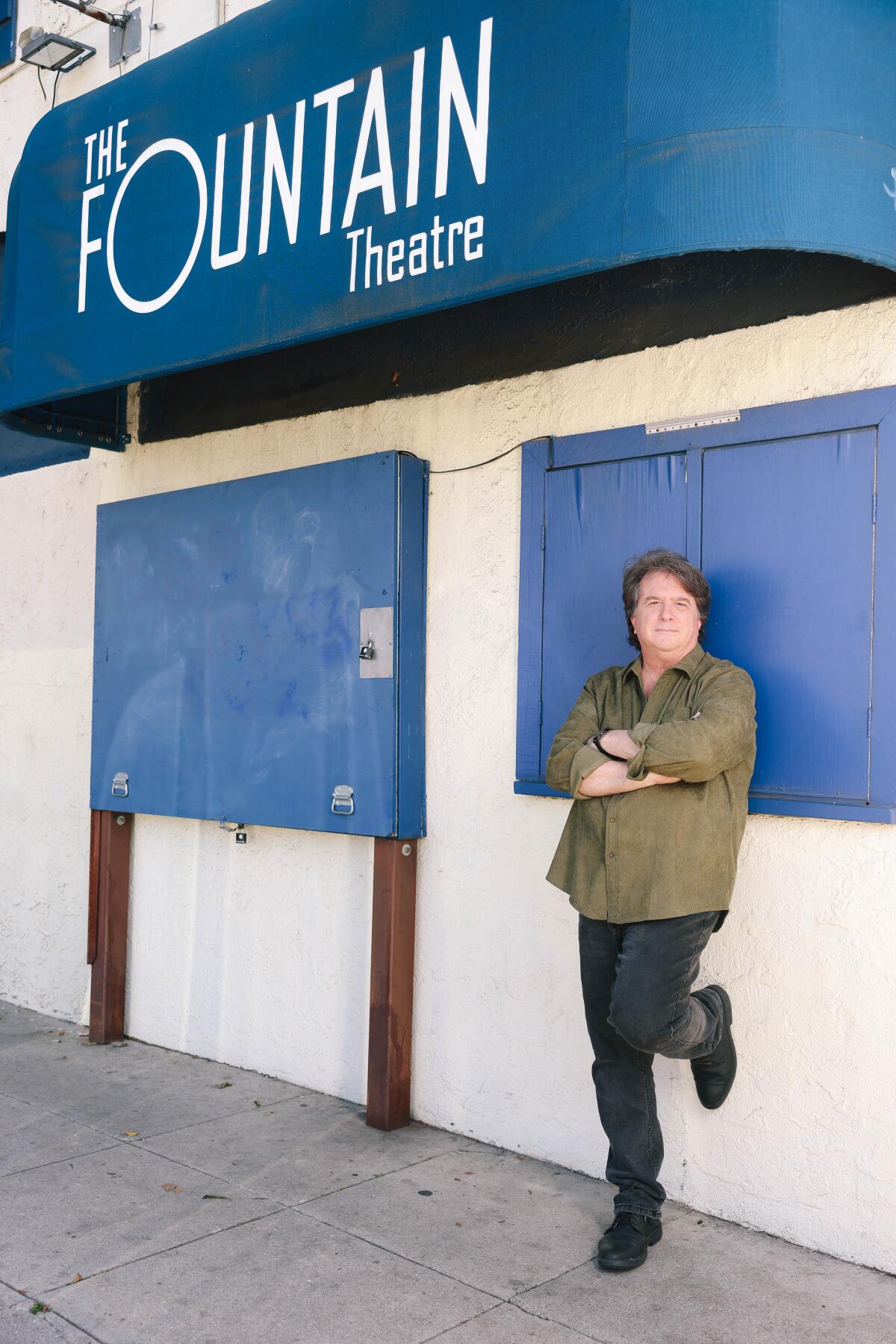
Nick Ullett’s “The Birthday Party: A Theatrical Catastrophe,” on view at the Matrix Theatre, tells the story of how a hotly anticipated revival of Harold Pinter‘s “The Birthday Party,” directed by Oscar winner William Friedkin, fell apart in 2014. “Droll in that articulate British way that never seems to break a sweat, Ullett is an expert raconteur — crisp yet colloquial,” writes McNulty. “His manner is that of a genial dinner party host who has a doozy tale to unfold.”
Classical notes
The L.A. Phil has announced its 2024-25 lineup — Gustavo Dudamel‘s penultimate season as musical director. It will include a festival inspired by the work of Mahler, a festival celebrating modern Korean performers curated by Unsuk Chin, and concerts led by Zubin Mehta and Esa-Pekka Salonen. The Times’ Jessica Gelt has all the deets.
The San Francisco Symphony has been experimenting with scents. Russian composer Alexander Scriabin, experienced synesthesia and for his symphony, “Prometheus, The Poem of Fire,” he wrote a part for “color organ,” an instrument that projects colored lights. Music director Salonen has added more senses to the mix: for a recent performance, diffusers dispersed scents created by a perfumer for Cartier. Classical music critic Mark Swed writes that the “sensational performance of ‘Prometheus’ — transparent, nuanced and colorful — had no need for further tickling the senses.”
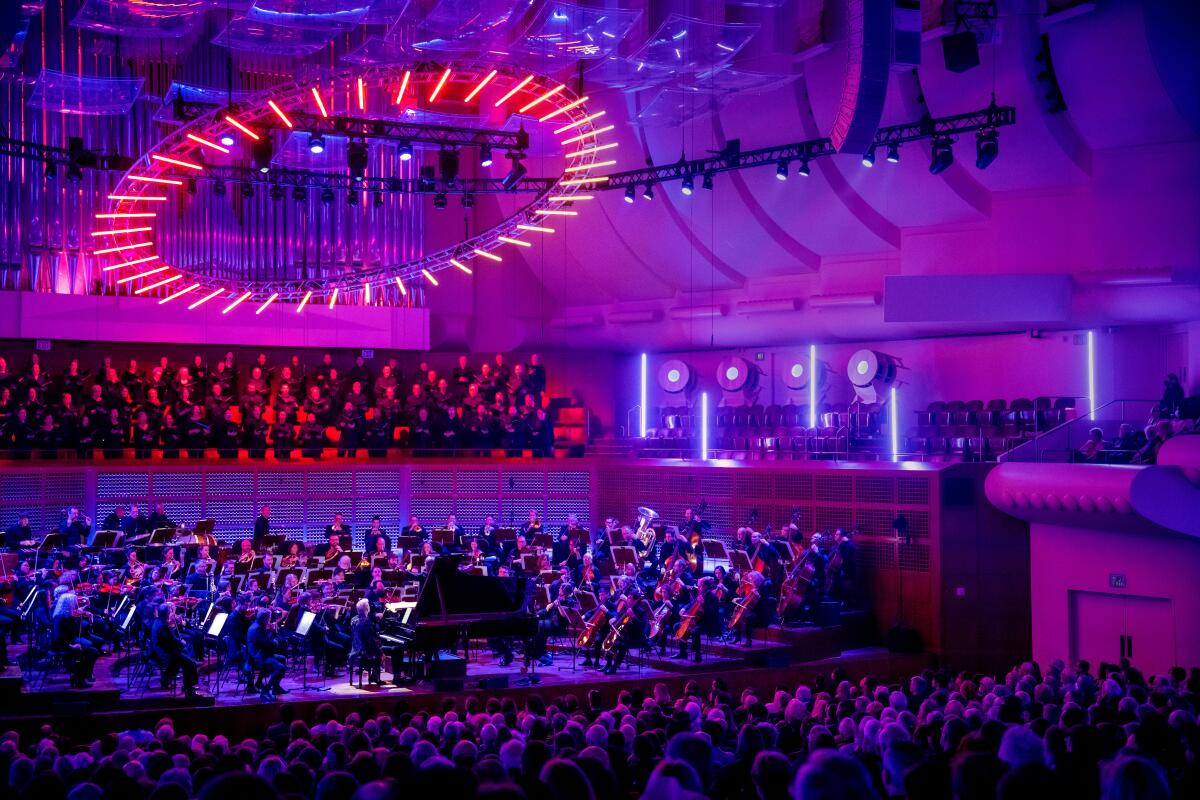
In and out of the galleries
Sara Fenske Bahat, interim director at San Francisco’s Yerba Buena Center for the Arts, has resigned after artists participating in “Bay Area Now 9” modified their own works to demand a cease-fire in Gaza. The museum has remained closed since the Feb. 15 protest, leading to accusations of censorship and a local county supervisor to call a special hearing into the publicly funded institution. KQED’s Nastia Voynovskaya reports on the controversy.
Enjoying this newsletter? Consider subscribing to the Los Angeles Times
Your support helps us deliver the news that matters most. Become a subscriber.
In January, the U.S. 9th Circuit Court of Appeals ruled that a painting that was looted from a Jewish family during the Nazi era should remain in the collection of Madrid’s Museo Nacional Thyssen-Bornemisza in deference to Spanish law. But U.S.-based David Cassirer, a descendant of Lilly Cassirer Neubauer (who was forced to give up the painting in order to escape the Nazis), is keeping up the fight to have the work returned. His lawyers have now asked an 11-judge en banc appellate panel to consider the case. Legal affairs reporter Kevin Rector reports on the odyssey of the painting — an urban scene created by Impressionist Camille Pissarro.
Design time
The Oakland Athletics have released architectural renderings of their planned $1.5-billion stadium in Las Vegas designed by the Bjarke Ingels Group — and it bears a striking resemblance to Jorn Utzon’s Sydney Opera House. Ingels likens it to a “spherical armadillo.”
Scott Osler at the San Francisco Chronicle points out that the renderings have relocated the sunset to the east of Las Vegas — proving that architectural renderings were AI before AI was a thing.
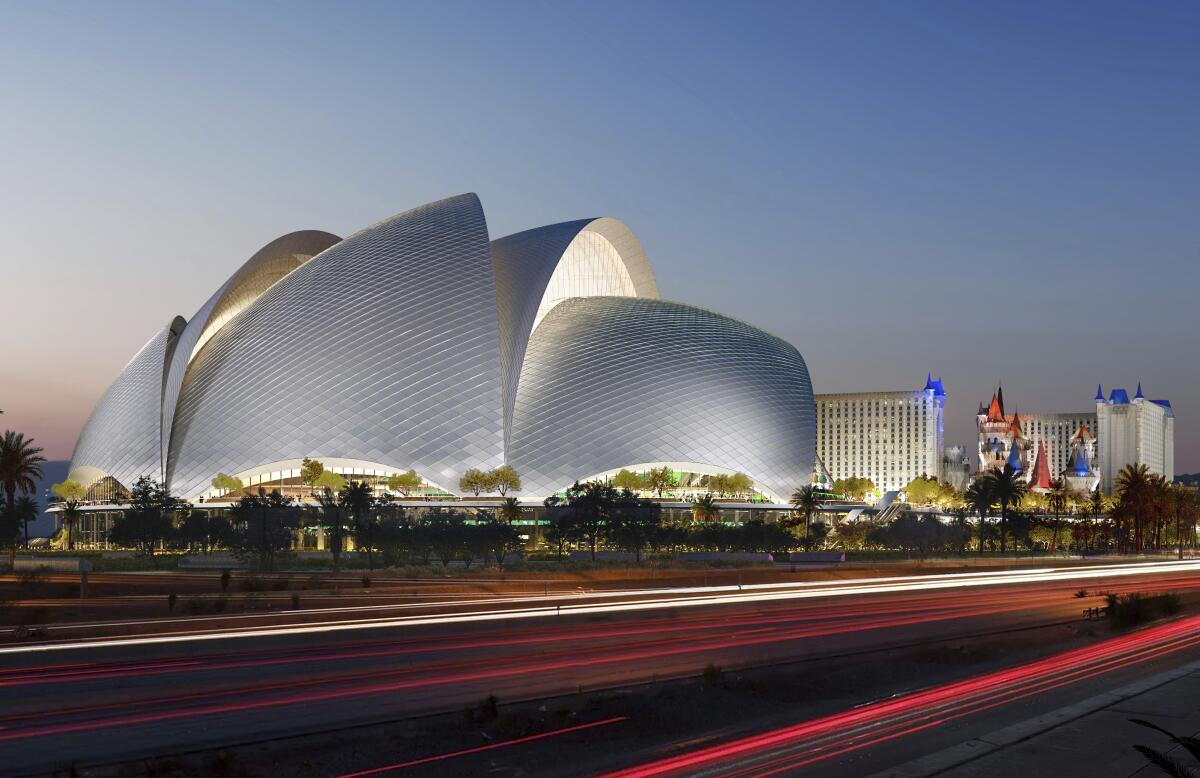
An addendum: Last week, I wrote about the new Los Angeles Review of Architecture and the paucity of architecture criticism on the regular. In my haste to file, I forgot to name a few key folks. On the list are John King, the urban design critic at the San Francisco Chronicle, who is also author of the terrific “Portal: San Francisco’s Ferry Building and the Reinvention of American Cities,” as well as Lee Bey, at the Chicago Sun-Times, who, in addition to being a member of the paper’s editorial board, covers architecture on the regular. (Sorry for the oversight, gentlemen. These newsletters are produced at an over-caffeinated speed.)
And while we’re at it, don’t forget Sam Lubell, who has contributed to the L.A. Times, and last week had a great profile of Mexican architect Fernanda Canales in the New York Times.
Moves
Japanese architect Riken Yamamoto is the winner of the 2024 Pritzker Architecture Prize. “During a career spanning the last five decades, he has produced a consistent body of work in a neutral, modernist style, creating cubic, gridded forms in steel, concrete and glass, which might be hard to get excited about at first glance,” writes the Guardian’s Oliver Wainwright. “But a closer look reveals further complexity and sophistication in how his buildings are layered and structured with social interaction foremost in mind.”
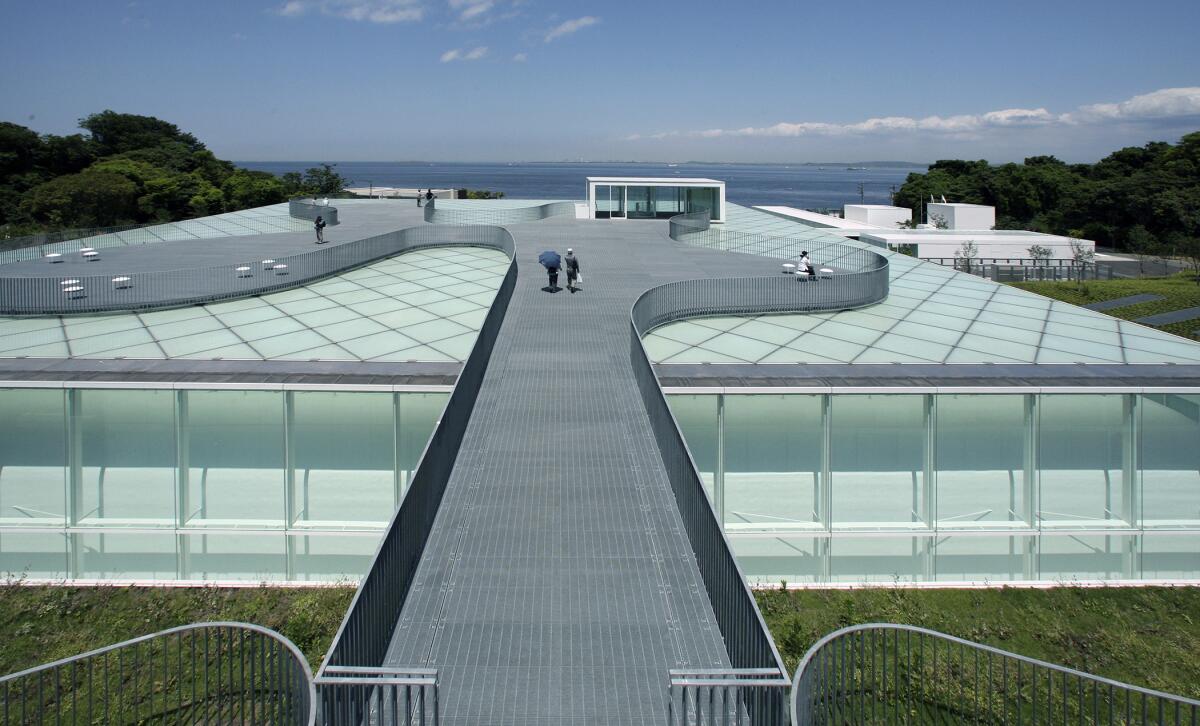
The National Endowments for the Arts has announced it new class of Heritage Fellows, which include muralist Fabian Debora, quilter Susan Hudson and dancer Bril Barrett.
Tizziana Baldenebro has been named the new executive director at the Beverly Willis Architecture Foundation. The foundation also recently appointed several new board members, a new board chair and opened a 2,000-square-foot space in New York.
Passages
Akira Toriyama, the creator of the globally beloved manga “Dragon Ball,” which tells the story of Son Goku, a monkey boy with superhuman strength who becomes one of Earth’s best warriors, has died at 68.
Lucas Samaras, a New York artist who performed in Allan Kaprow’s “Happenings” and went on to produce a diverse body of work that often featured his own body, is dead at 87.
Fathi Ghaben, a Palestinian artist and educator whose paintings often depicted working-class life, and who employed the Palestinian flag in his work, even during periods in which it was banned, is dead at 77. He died in Gaza, unable to evacuate after experiencing respiratory problems.
Josette Molland, who chronicled the terrors of the Nazi camp at Ravensbrück in folk-art style paintings, has died at 100.
Antoine Predock, an Albuquerque-based architect known for creating buildings that resonated with the landscape of the Southwest, but who may be better known in the Southland as the designer of San Diego’s industrial-looking Petco Park, has died at 87.
In the news
— A Microsoft engineer warns that the company’s AI tool creates violent, sexualized images and makes mincemeat of copyright. Go figure.
— As Ana Mendieta inspires a podcast, a novel and a film produced by America Ferrera, her family struggles to control her legacy.
— Speaking of which: Critic Coco Fusco has a fascinating piece in Hyperallergic about a letter that Carl Andre once sent her.
— “Debauchery and decadence meet in the lowly doughnut”: John Yau on the paintings of Emily Eveleth.
— Art dealer Guy Wildenstein has been convicted of tax fraud in France.
— Was Leonardo da Vinci Jewish?
— The New York Times’ Javier C. Hernández has a look at why more U.S. orchestras don’t have U.S. conductors.
— An ode to the architect-designed public toilets of Tokyo and the man who keeps them pristine.
— A first look at California‘s high-speed rail stations.
— If you speak Spanish, Radio Ambulante’s “Central” has an absolutely fantastic series about the rise of Nayib Bukele in El Salvador.
And last but not least ...
And since we’re all about cinema this week, the podcast “Our Opinions Are Correct” recently replayed an interesting episode that digs into the politics of “Dune” and the ways in which Frank Herbert was attempting to satirize the hero’s journey.
The biggest entertainment stories
Get our big stories about Hollywood, film, television, music, arts, culture and more right in your inbox as soon as they publish.
You may occasionally receive promotional content from the Los Angeles Times.




